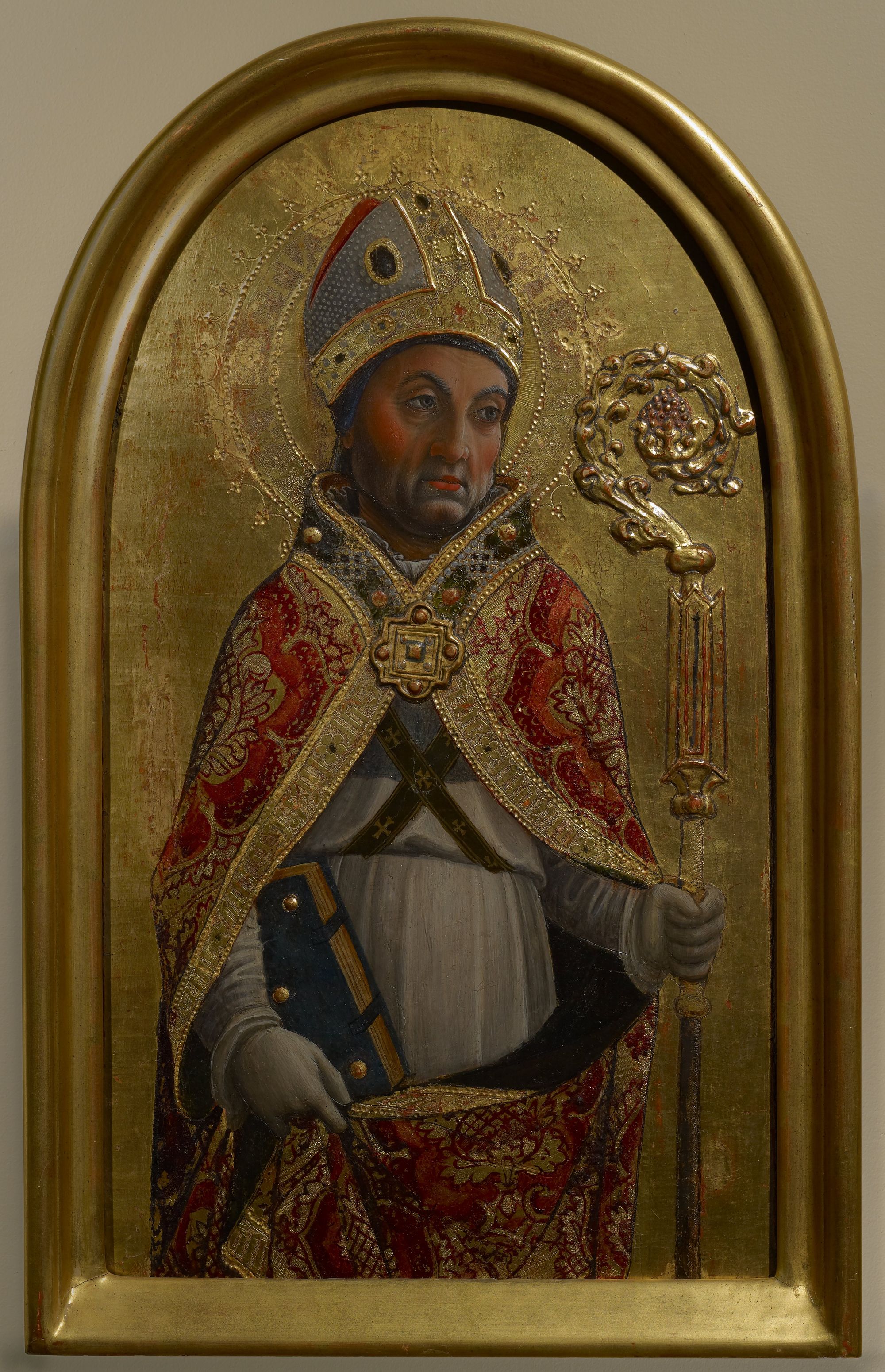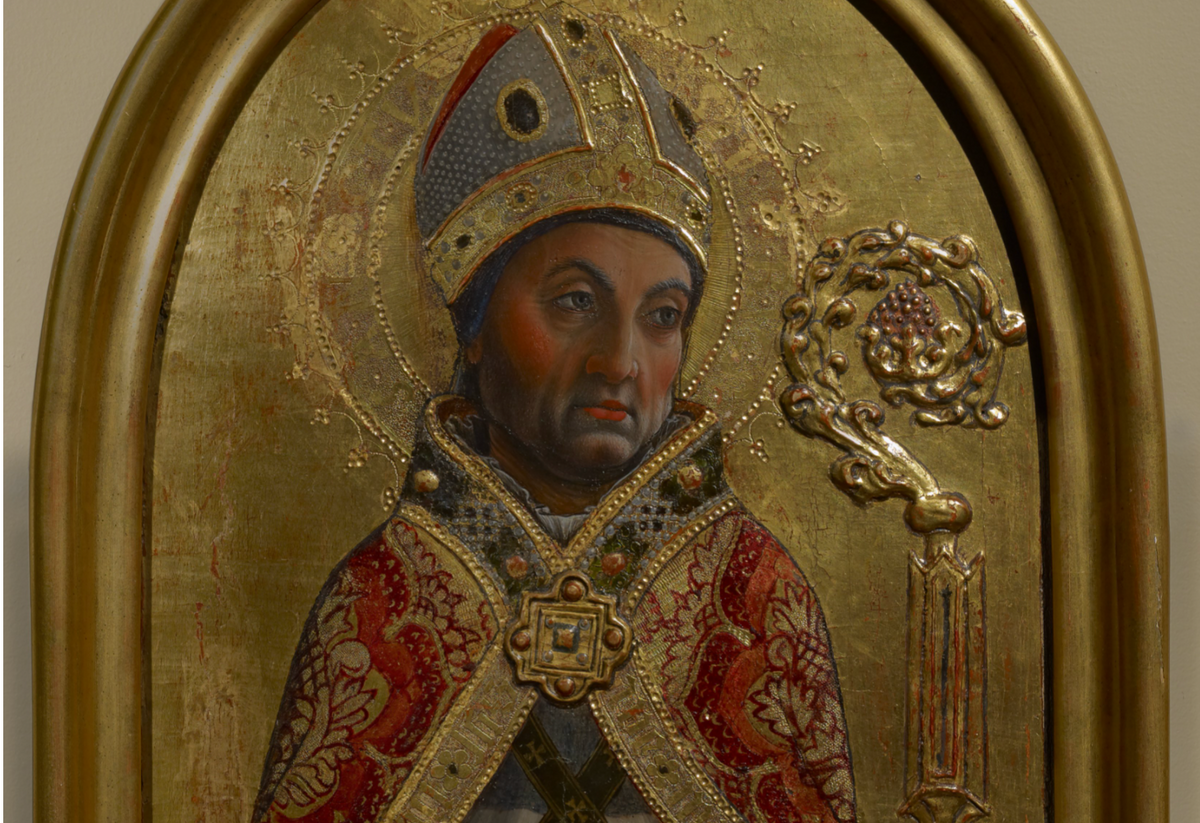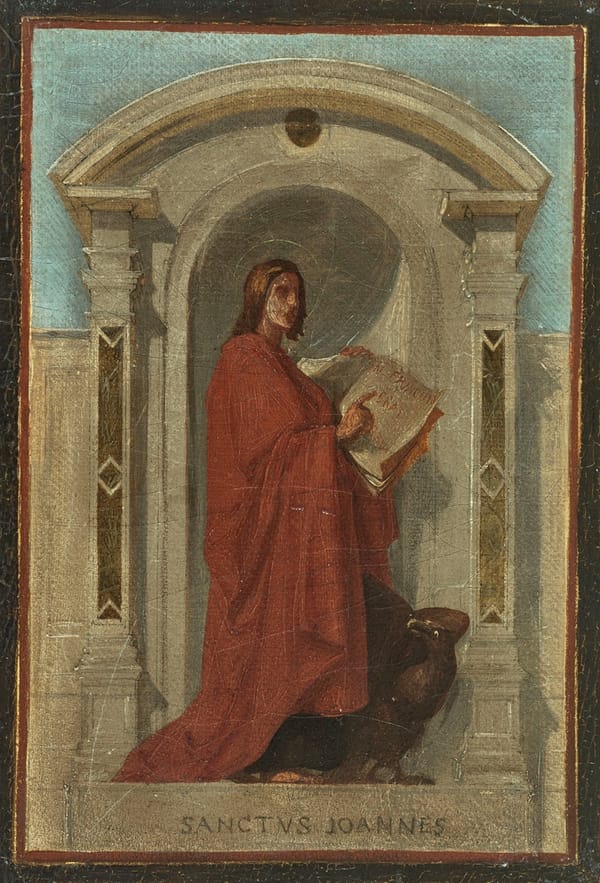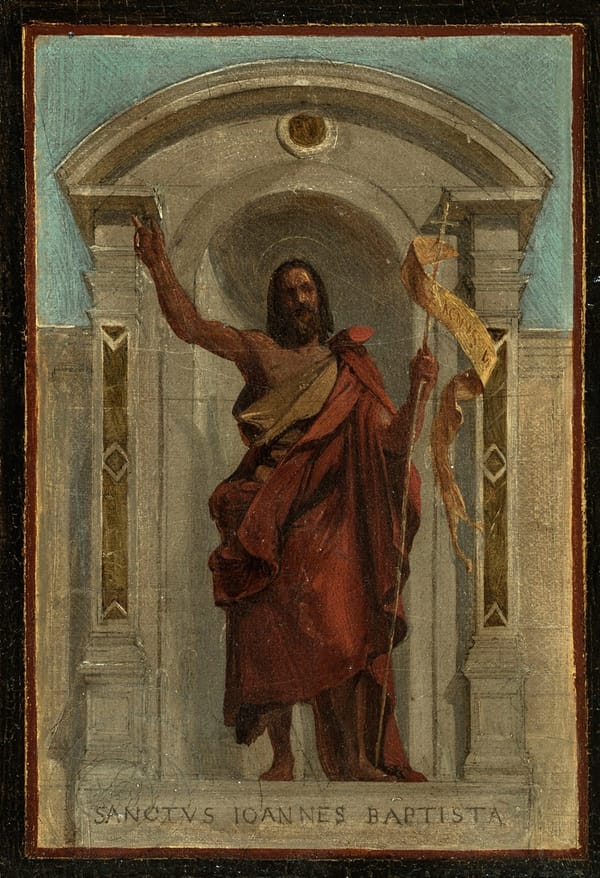During the Renaissance, altarpieces commonly portrayed biblical scenes, such as Madonna and Child, examples of which are in this gallery. These two paintings, Saint Sirus and Saint Paul, were likely part of a larger altarpiece made up of many panels, called a polyptych. The presence of a saint on an altarpiece could have a number of meanings. The saint could be the patron saint of the church or city that housed the altarpiece, for example. The key to identifying saints is to look closely at the attributes shown with them. Saint Sirus wears a mitre, the pointed headpiece, and holds a crozier, or ceremonial staff. These attributes indicate Saint Sirus was a bishop. Saint Paul is shown with his usual physical characteristics-receding hairline and long, brown beard; he is also holding a sword, his personal attribute.
Free Downloads Below
Hi-Res
1200px
800px








